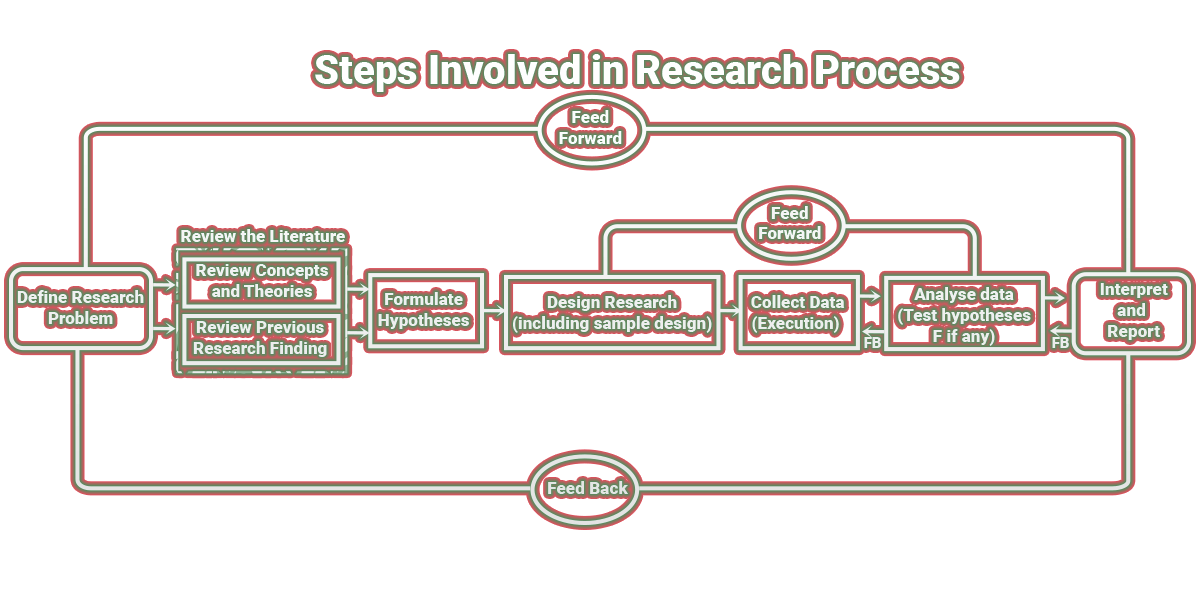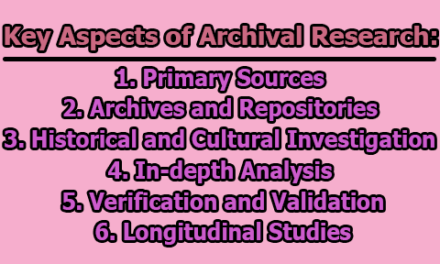The Art of Descriptive Writing:
Descriptive writing is a powerful form of expression that allows writers to paint vivid pictures with words, capturing the essence of a scene, person, or experience. It serves multiple purposes, from building a strong writing structure to enhancing vocabulary and sharpening descriptive skills. In this exploration, we will delve into the art of descriptive writing: purpose, techniques, types, and provide valuable tips for crafting effective descriptive essays.
What is Descriptive Writing?
Descriptive writing is a literary technique that aims to provide detailed and vivid descriptions of a person, place, object, or event. Its primary goal is to engage the reader’s senses, creating a mental image that goes beyond the surface level of observation. This form of writing appeals to the reader’s emotions and imagination, making the experience more immersive.
Purpose of Descriptive Writing:
Descriptive writing serves a multitude of purposes, each contributing to the richness and depth of the written piece. Whether employed in literature, journalism, or creative expression, the purpose of descriptive writing extends beyond the mere conveyance of information. It aims to engage the reader on a sensory and emotional level, creating a vivid and lasting impression. Let’s explore the intricacies of the purposes served by descriptive writing:
1. Eliciting Emotional Responses: One of the primary purposes of descriptive writing is to evoke emotional responses from the reader. By crafting detailed and evocative descriptions, writers can connect with the audience on a deeper level, stirring emotions and fostering empathy. Whether it’s describing the beauty of a landscape, the agony of a character, or the serenity of a moment, descriptive writing allows readers to feel and experience the narrative on an emotional plane.
2. Creating Vivid Imagery: Descriptive writing is a powerful tool for creating vivid imagery in the reader’s mind. By carefully selecting and arranging words, writers can paint detailed pictures, allowing readers to visualize scenes, characters, or events with remarkable clarity. This ability to generate mental images enhances the overall reading experience, making the narrative more engaging and memorable.
3. Establishing Atmosphere and Mood: Through the use of descriptive language, writers can establish a particular atmosphere or mood within their writing. Whether it’s the eerie stillness of a moonlit night or the bustling energy of a vibrant city, descriptive writing sets the tone, immersing the reader in the desired emotional ambiance. This atmospheric quality enhances the overall impact of the narrative and contributes to the reader’s immersive experience.
4. Conveying Specific Details: Descriptive writing excels at conveying specific details that contribute to a comprehensive understanding of the subject matter. Instead of presenting generic information, writers delve into the intricacies of a scene, object, or person, providing readers with a nuanced and detailed perspective. This attention to detail adds depth to the narrative and enhances the reader’s sense of connection to the story.
5. Fostering Imagination and Creativity: Descriptive writing encourages readers to engage their imagination and creativity. By leaving room for interpretation and inviting readers to envision the scenes through their own perspectives, writers create a collaborative experience. This participatory aspect of descriptive writing allows readers to co-create the narrative in their minds, fostering a sense of involvement and personal connection.
6. Capturing Realism and Authenticity: Descriptive writing is instrumental in capturing the realism and authenticity of a story or setting. By providing sensory details and vivid descriptions, writers can transport readers to a specific time and place, making the narrative more relatable and convincing. This authenticity enhances the reader’s ability to suspend disbelief and fully immerse themselves in the world created by the writer.
7. Building Tension and Suspense: In genres such as mystery, suspense, or thriller, descriptive writing is employed to build tension and anticipation. Through careful pacing and the strategic use of descriptive elements, writers can create an atmosphere of suspense, keeping readers on the edge of their seats. This purposeful manipulation of language contributes to the overall impact of plot twists and climactic moments.
8. Enhancing Memory and Recall: Descriptive writing has the power to enhance memory and recall. When readers are exposed to vivid and detailed descriptions, the sensory experience becomes more memorable. The use of descriptive language can imprint scenes, characters, and emotions into the reader’s memory, leaving a lasting impression long after the reading experience concludes.
Descriptive Writing Techniques:
Descriptive writing relies on a set of techniques that enable writers to create vivid and engaging narratives, immersing readers in a sensory experience. These techniques involve the careful selection and arrangement of words to convey detailed and evocative descriptions. Let’s explore these descriptive writing techniques:
1. Selecting the Right Topic: The foundation of effective descriptive writing lies in choosing the right topic. Whether it’s a place, person, object, or event, the selected subject should offer rich opportunities for detailed descriptions. A well-chosen topic sets the stage for a compelling narrative that captivates the reader’s imagination.
2. Using Descriptive Words: Descriptive language is the lifeblood of this writing style. Writers must employ a rich array of adjectives, adverbs, and precise nouns to create a sensory experience for the reader. Instead of relying on generic terms, descriptive writing demands specificity and detail to paint a nuanced picture.
Example: Instead of saying “a big tree,” one might use “a towering oak with branches stretching towards the sky.”
3. Organizing Details Chronologically: To ensure coherence and flow in the narrative, organizing details chronologically can be crucial. Whether describing an event, a journey, or a progression of emotions, presenting information in a logical sequence helps readers follow the story easily.
Example: When describing a day at the beach, start with the arrival, move through the various activities, and conclude with the departure.
4. Using Figurative Language: Figurative language, such as metaphors, similes, and personification, adds depth and creativity to descriptive writing. By comparing one element to another or attributing human characteristics to non-human entities, writers create vivid images that resonate with readers on a symbolic level.
Example: “The waves whispered secrets to the shore, and the sun painted the sky with strokes of golden warmth.”
5. Appealing to the Senses: Descriptive writing should engage the reader’s senses to create a fully immersive experience. By incorporating details that appeal to sight, sound, touch, taste, and smell, writers enable readers to visualize and feel the depicted scenes.
Example: “The aroma of freshly baked bread wafted through the air, and the sound of children’s laughter echoed in the bustling market.”
6. Creating Imagery with Vivid Details: Crafting vivid imagery involves paying attention to details. Instead of providing a generic overview, writers should focus on specific, concrete details that enhance the reader’s understanding and visualization of the subject.
Example: Rather than saying “a beautiful garden,” describe “a garden adorned with vibrant tulips, their petals opening like a kaleidoscope in the morning sun.”
7. Utilizing Active Verbs: Active verbs infuse energy and dynamism into descriptive writing. Instead of relying on passive constructions, use strong, active verbs to convey actions and create a sense of movement within the narrative.
Example: Instead of saying “The car was driven slowly down the winding road,” one might say “The car meandered leisurely down the winding road.”
8. Balancing Showing and Telling: While showing involves providing specific details and creating a sensory experience, telling involves conveying information more directly. A balance between the two is crucial in descriptive writing. Too much showing without telling can lead to ambiguity, while too much telling without showing may result in a lack of engagement.
Example: Instead of directly stating “She was sad,” show it through actions and details, such as “Her shoulders slumped, and a solitary tear traced its path down her cheek.”
9. Paying Attention to Tone and Mood: The tone and mood of descriptive writing contribute significantly to the overall impact. Whether aiming for a nostalgic, whimsical, somber, or suspenseful atmosphere, writers should carefully choose words and expressions that align with the desired emotional tone.
Example: “The abandoned mansion exuded an eerie silence, casting a haunting spell on anyone who dared to approach.”
10. Editing for Conciseness: While it’s essential to provide detailed descriptions, writers should also be mindful of conciseness. Editing is crucial to ensure that the descriptions are clear and impactful without unnecessary verbosity.
Example: Trim excessive details to maintain focus and impact.
Types of Descriptive Writing:
Descriptive writing spans a diverse range of genres and styles, each serving a unique purpose in conveying vivid and detailed descriptions. From capturing the essence of a person’s life to transporting readers to distant lands through travel narratives, the various types of descriptive writing cater to different interests and storytelling approaches. Let’s delve into some prominent types of descriptive writing:
1. Biography: Descriptive writing in the form of a biography aims to provide a comprehensive and detailed account of a person’s life. It goes beyond the mere chronology of events, delving into the individual’s character, experiences, and impact on the world. Biographical descriptive writing often incorporates rich details about the subject’s personality, relationships, and contributions, creating a nuanced portrayal.
Example: “The biography chronicled the artist’s journey from a humble upbringing to international acclaim, capturing the intricacies of their creative process and the profound influence on the art world.”
2. Travel Writing (Travel Blogs): Travel writing utilizes descriptive elements to transport readers to different locations, offering a vicarious experience of the writer’s journeys. From the bustling streets of a foreign city to the serene landscapes of natural wonders, travel writing relies on vivid descriptions to convey the atmosphere, culture, and unique aspects of each destination.
Example: “The travel blog recounted the author’s adventures in a vibrant Moroccan souk, immersing readers in the sights, sounds, and aromas of the bustling marketplace.”
3. Journal: Personal journals often incorporate descriptive writing to capture the writer’s thoughts, emotions, and daily experiences. Journalistic descriptions aim to convey the writer’s inner world, reflecting on the mundane and extraordinary aspects of life. This type of descriptive writing provides a raw and unfiltered glimpse into the writer’s psyche.
Example: “In her journal, she described the quiet solitude of a rainy afternoon, the rhythmic tapping of raindrops against the window creating a contemplative atmosphere.”
4. Poetry: Poetry inherently relies on descriptive language to evoke emotions, create vivid imagery, and convey profound meanings in condensed forms. Poets use metaphors, similes, and sensory details to paint pictures with words, engaging the reader’s imagination and emotions.
Example: “The poet’s verses wove a tapestry of moonlit dreams, with cascading silver beams illuminating the tranquil meadows where memories whispered softly.”
5. Nature Writing: This form of descriptive writing focuses specifically on the natural world, capturing the beauty and intricacies of landscapes, flora, and fauna. Nature writing often aims to evoke a sense of wonder and appreciation for the environment, encouraging readers to connect with the world around them.
Example: “The nature essay depicted the dance of cherry blossoms in the spring breeze, their delicate petals creating a symphony of color beneath the azure sky.”
6. Character Description in Fiction: Descriptive writing is essential in fiction, especially when introducing and developing characters. Writers use detailed descriptions of physical appearance, personality traits, and mannerisms to bring characters to life, allowing readers to form vivid mental images.
Example: “The novelist meticulously crafted the protagonist’s description, detailing the piercing gaze, the weathered hands that told stories of a tumultuous past, and the enigmatic smile that hinted at hidden depths.”
7. Historical Description: Historical descriptive writing involves recreating the past with vivid details, providing readers with a sensory experience of bygone eras. This type of writing incorporates meticulous research to accurately depict settings, clothing, and societal norms of a particular time period.
Example: “The historical novel immersed readers in the opulence of the Victorian era, with descriptions of grand ballrooms, intricately embroidered gowns, and the societal intricacies of the time.”
8. Culinary Writing: Descriptive writing extends to the realm of food, with culinary writing focusing on the detailed depiction of flavors, aromas, and visual appeal of dishes. This type of writing aims to tantalize the senses and convey the essence of gastronomic experiences.
Example: “The food critic’s review painted a mouth-watering picture of the restaurant’s signature dish, describing the succulent tenderness of the slow-cooked meat and the harmonious blend of aromatic spices.”
Tips for Effective Descriptive Essay Writing:
Crafting an effective descriptive essay requires a combination of creativity, attention to detail, and a deep understanding of the chosen subject. Whether you’re describing a place, person, event, or emotion, the following tips will guide you in creating a descriptive essay that captivates your readers:
1. Prewriting for the Descriptive Essay:
- Brainstorming: Start by brainstorming ideas related to your chosen topic. Consider the specific details, emotions, and sensory experiences you want to convey. Jot down key words or phrases that come to mind.
- Choosing a Focused Topic: Select a specific aspect or angle of your topic to focus on. Instead of attempting to describe everything at once, choose a central theme that allows for in-depth exploration and detailed description.
- Considering the Five Senses: Engage all five senses when brainstorming and writing. Describe not only what can be seen but also what can be heard, touched, tasted, and smelled. This comprehensive approach adds richness to your descriptions.
2. Drafting a Descriptive Essay:
- Starting Strong with an Engaging Introduction: Begin your essay with a captivating introduction that sets the tone for the entire piece. Consider using a vivid anecdote, a thought-provoking question, or a powerful descriptive statement to grab the reader’s attention.
- Using Descriptive Language: Populate your essay with descriptive words that create a sensory experience for the reader. Be specific and vivid in your descriptions, avoiding generic terms. Show, don’t tell, by using concrete details to paint a picture in the reader’s mind.
- Organizing Details Effectively: Structure your essay in a way that maintains a logical flow. Organize your details chronologically, spatially, or by importance, depending on the nature of your subject. This helps readers follow your narrative easily.
- Developing a Clear Thesis Statement: While descriptive essays often lack a traditional thesis statement, ensure that the main idea or purpose of your essay is clear. This provides a focus for your writing and helps readers understand the purpose of the description.
- Creating a Dominant Impression: Strive to create a dominant impression or overall mood in your essay. Whether it’s conveying a sense of nostalgia, serenity, excitement, or mystery, maintain a consistent tone throughout your writing.
3. Revising a Descriptive Essay:
- Editing for Clarity: Review your essay for clarity and coherence. Ensure that your descriptions are clear and concise, avoiding ambiguity. Trim unnecessary details that do not contribute to the overall theme.
- Checking for Consistency: Maintain consistency in tone, style, and pacing throughout your essay. A well-balanced descriptive essay should have a harmonious flow, ensuring that each paragraph seamlessly transitions to the next.
- Seeking Feedback: Share your essay with peers, friends, or mentors to gain constructive feedback. Others may offer valuable insights into areas that need clarification or suggestions for enhancing the descriptive elements of your writing.
4. Asking Questions to Yourself:
- Did I Evoke the Senses? Assess whether your writing appeals to the senses. Can the reader visualize, hear, smell, taste, or touch the elements you’ve described?
- Is the Language Precise? Evaluate the precision of your language. Are your words specific and evocative, or do they leave room for ambiguity? Choose words that convey your intended meaning accurately.
- Does the Essay Flow Smoothly? Consider the overall flow of your essay. Does it transition seamlessly from one idea to the next, maintaining the reader’s interest? Use transitions to guide the reader through your narrative.
- Have I Captured the Essence? Reflect on whether your descriptive writing captures the essence of the chosen subject. Does it convey the emotions and nuances you intended? Ensure that your descriptions go beyond surface-level observations.
In conclusion, descriptive writing is a versatile and impactful form of expression, offering writers the tools to create immersive experiences for readers. By understanding its purpose, mastering techniques, exploring various types, and following effective writing tips, aspiring writers can unlock the full potential of descriptive writing. As you embark on your descriptive writing journey, remember the profound impact words can have in bringing your stories and experiences to life.

Assistant Teacher at Zinzira Pir Mohammad Pilot School and College










